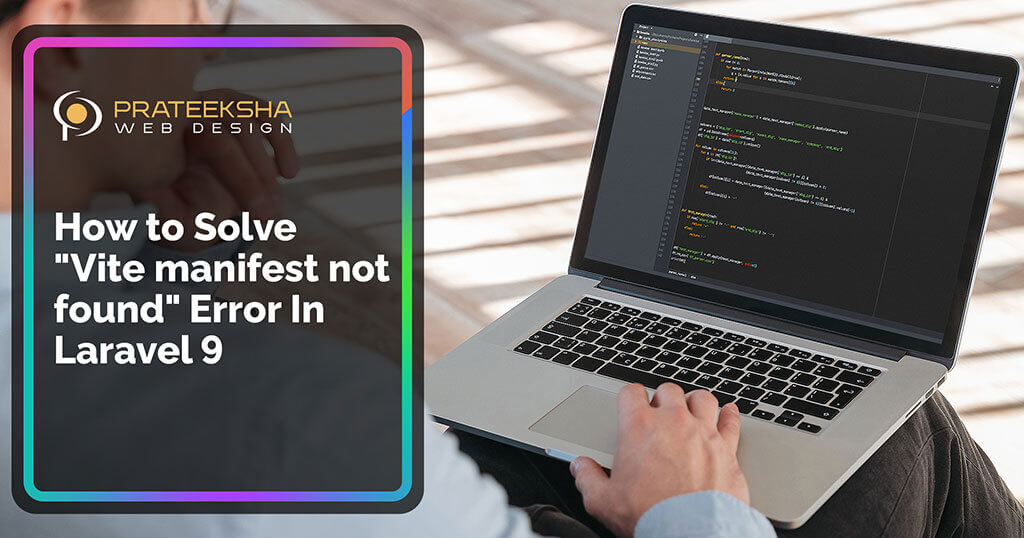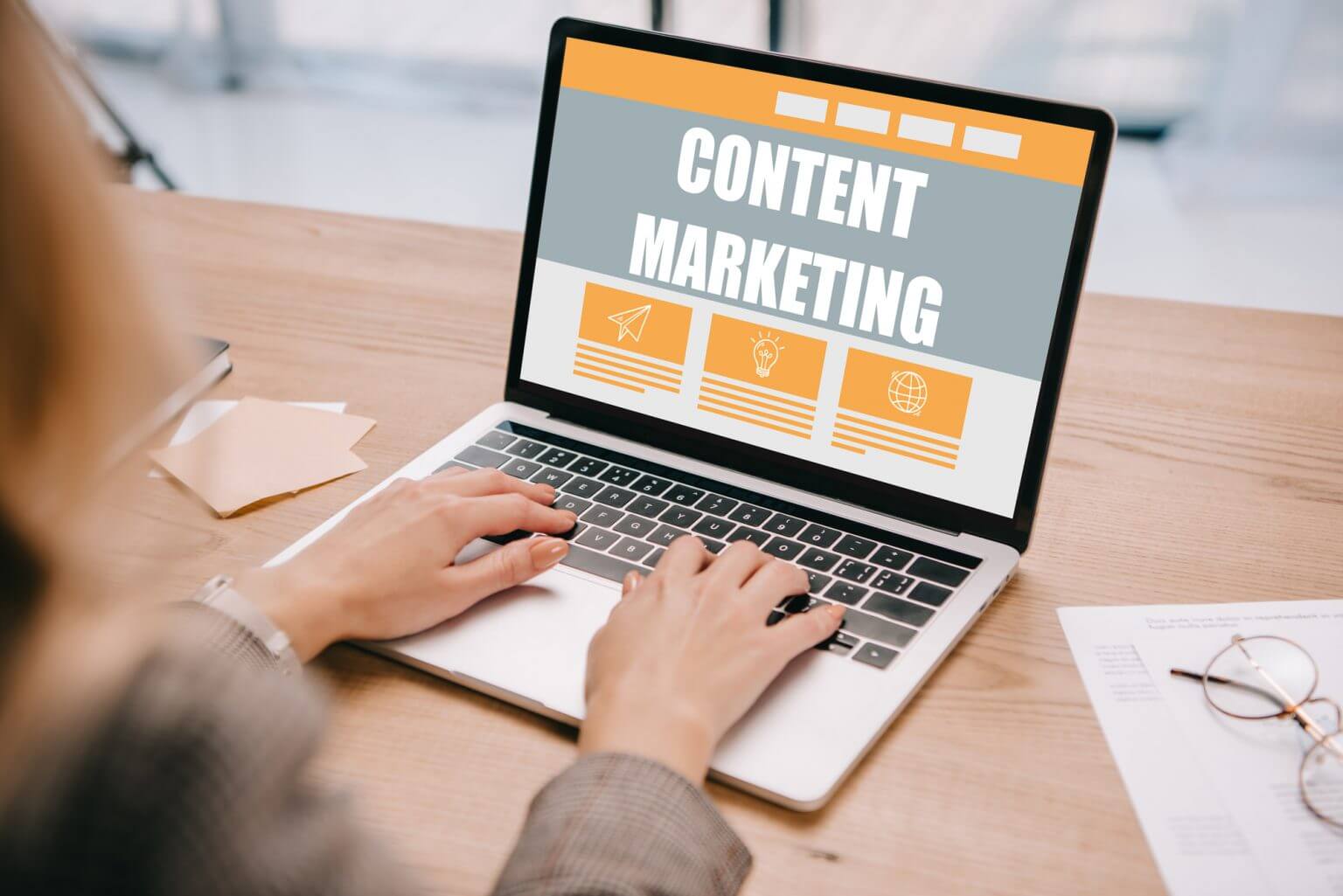How to Solve Vite manifest not found Error In Laravel 9

These websites will keep your audience's attention, improve the reputation of your brand, and increase sales. We'll make sure your content shines and makes a lasting impression on your target market, from easy browsing to mobile responsiveness.

What is Content Marketing?
Material marketing is a strategy that focuses on making and distributing useful, relevant, and consistent material to draw and engage a target audience. It is a type of marketing that tries to give potential buyers useful information, entertainment, or teaching material instead of trying to sell them something directly. The main goal of content marketing is to build trust, gain credibility, and create long-term connections with customers.
In content marketing, the content is a useful asset that meets the wants and interests of the target group. It can be blog posts, papers, movies, infographics, podcasts, and social media posts, among other things. The material is carefully made to appeal to the target audience, giving them information that is important and useful and fits with their preferences and pain points.
How Web Design Impacts Content Marketing?
Accessibility
Web design makes sure that information can be used by more people. A well-designed website takes accessibility standards into account, so people with disabilities can view the site's information. This makes content marketing more effective and helps it reach more people.
Appearance
The look of a website has a big effect on content marketing. A design that looks good draws people in, makes them want to look around more, and improves the entire user experience. When content is presented in a way that looks good and is done professionally, it shows credibility and skill. This has a positive effect on how the audience sees the content and the business behind it.
Readability
Readability is another important factor that web design affects. Websites that are well-made use style, font sizes, line spacing, and contrast to make it easy to read the text. Text that is easy to read makes the whole user experience better and makes it easier for people to read the information. On the other hand, a website that is cluttered or badly made can make people less likely to read the material.
Comprehension
Content understanding is affected by how a website is designed. Design elements like headings, subheadings, bullet points, and visual hierarchy are used to organize and show material in a way that is sensible and easy to understand. This makes it easier for the listener to take in, understand, and remember the information.
Designing a Content-Friendly Site.
For content marketing to work, the website must be easy to add information to. It means setting up your website so that your content stands out and is easy to find and interesting for guests. A site that is easy to use should have a clean, well-organized style that makes it easy for users to move around and find the information they need. By using clear, easy-to-understand menus, a search function, and sensible content grouping, you can make sure that viewers can easily find and read your content. Also, adding things like linked posts, suggested articles, or a library of content can encourage users to dig deeper into your content and stay on your site longer.
How Web Design Affects Your Content Marketing Positively?
Web design has a big effect on the success and efficiency of content marketing. A well-designed website can improve how your information is presented and delivered, making it more interesting and appealing to your audience. When fonts, color patterns, and images are used well, they can create a visually appealing and consistent brand experience that draws people in and makes them want to stay and look around. Also, putting call-to-action buttons, social sharing icons, and email registration forms in the right places can help turn visitors into leads or buyers, which will boost the effect of your content marketing efforts.
Creating Visually Engaging Elements Helps with Impact.
Visual features are very important in content marketing, and web design gives you a good way to show them off. Adding things that are interesting to look at, like high-quality pictures, videos, infographics, and interactive media, can make your material much more powerful. Visuals not only grab people's attention, but they also make complicated information or ideas easier to understand and remember. Through careful use of style, spacing, and visual order, web design can make sure that these elements are presented in a way that looks good and gets people's attention. This will make your content more powerful and likely to be shared.
Increase Excitement for Your Content Marketing Efforts.
Web design has the power to make your content marketing efforts more exciting and interesting. By making visually appealing landing pages or areas for new or future content, you can get your audience interested and excited. Headlines that get people's attention, previews that sound interesting, and images that catch the eye can make people want to learn more. Also, adding interactive features like quizzes, polls, or games can make your content marketing efforts more fun and engaging for users.
Tips For Improving The User Experience.
Streamline Navigation:
Users need to be able to find their way around your website or app without any trouble. Make your navigation menu easier to use by putting it in a sensible order and giving it names that are easy to understand. Install a search bar to help users quickly find the information they want. Also, think about adding hints or a guide to help users find their way around and letting them go back if they need to.
Optimize Page Load Speed:
In the fast-paced digital world of today, people don't have much respect for websites that take a long time to load. Optimizing how fast your pages load is a must if you want your users to have a good time. Reduce loading times by compressing pictures and files, shortening code, and using browser caching. You might want to use content delivery networks (CDNs) to spread your information across many computers around the world. Regularly check and tweak your website's performance to make sure that pages run quickly and correctly. A faster website not only makes users happier but also helps it rank higher in search engines.
Ensure Mobile Responsiveness:
Make sure your website or platform works well on mobile devices. With the rise of mobile devices, it is important to make sure your website or platform works well on mobile devices. Mobile responsiveness means that your site adjusts to different screen sizes and shows correctly, giving people the best viewing experience possible. Use responsive design principles, like fluid layouts and flexible pictures, to make sure your content is available and looks good on all devices. Test your website on a variety of mobile devices to make sure it works, is easy to read, and is easy to use. Since mobile viewing is becoming more popular, you need to make sure your site works well on mobile devices if you want to attract and keep people.
Prioritize Accessibility:
Designing for accessibility means making sure your website or tool can be used by everyone, no matter what they can or can't do. Consider adding accessibility features like alt tags for pictures, captions for videos, and text replacements for non-text content to help users with visual problems or screen readers. Make sure your site meets usability guidelines, like the Web Content usability Guidelines (WCAG), so it can be used by more people.
The Benefits of Web Design Impact Content Marketing.
Visual Appeal and Brand Consistency:
A well-designed website gives users a brand experience that is both visually appealing and uniform. Web design helps people remember and recognize your brand by making sure that the design elements, color schemes, fonts, and images all match your brand personality. When your website and its content look and feel the same, it gives off a professional and unified vibe that builds trust and confidence with your audience. When the style matches the content, it draws people in and makes them more likely to interact with it and share it.
User-Friendly Interface and Enhanced User Experience:
Web design focuses on making an interface that is easy to use and gives users a smooth and natural experience. A well-designed website has clear navigation, a logical information hierarchy, and call-to-action buttons that are carefully placed to lead users to the content or conversion points they want to see. Web design keeps people interested and pushes them to look around your site more by making the user experience better. Smooth navigation and a design that responds to different devices make it easy for users to find and use your content, no matter what device or screen size they prefer.
Optimization for Search Engines and SEO:
Elements of web design can directly affect search engine optimization (SEO) and how visible your content is. Your content pages' search engine rankings will go up if your website has clean code, loads quickly, works well on mobile devices, and has the right meta tags. Web design also includes setting up the style of the content, the heading tags, and the internal links, all of which make it easier for search engines to scan and crawl the site.
Introduction:
In this article, we'll take a look at the "Vite manifest not found" error that several Laravel 9 developers have been seeing. When doing front-end development with the Vite asset bundler, this problem frequently arises. This post will investigate the root causes of this mistake and provide detailed recommendations for fixing it.
Understanding the Error:
Before we look at how to fix this error, let's figure out why it happens. Vite took the place of Laravel Mix as the default front-end asset bundler in Laravel 9. Vite takes advantage of the power of ES modules and offers faster builds and the ability to change modules while they are being built. The "Vite manifest not found" problem, on the other hand, means that Laravel can't find the Vite manifest file.
To solve the "Vite manifest not found" error in Laravel 9, follow the steps below:
Step 1: Clear Caches First, clear your Laravel application cache by running the following command in your terminal or command prompt:
php artisan cache:clearStep 2: Install Dependencies Make sure you have all the required dependencies installed. In your project's root directory, run the following command:
npm installStep 3: Generate the Vite Manifest Next, generate the Vite manifest file by running the following command:
npm run devThis command will compile your front-end assets and generate the Vite manifest file. Step 4: Check Configuration Ensure that your Laravel configuration files are properly set up. Open your 'webpack.mix.js' file and ensure it contains the following code:
const mix = require('laravel-mix');
mix.js('resources/js/app.js', 'public/js')
.postCss('resources/css/app.css', 'public/css', [
//
]);Step 5: Restart the Development Server If you're running a local development server, restart it to ensure any cached files are cleared. You can do this by stopping the server and running the following command:
npm run devStep 6: Run the Application Finally, run your Laravel applications again and see if the "Vite manifest not found" error is resolved. If the error persists, double-check the previous steps and ensure you followed them correctly.
Conclusion:
When working with Laravel 9 and Vite, the "Vite manifest not found" error can be a pain. But if you follow the steps in this blog post, you can solve this problem for good. Remember to clear caches, install dependencies, create the Vite manifest, check your configuration. If you do these things, you should be able to fix the mistake and keep working on your Laravel 9 project without any problems. -->